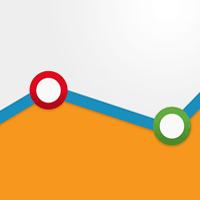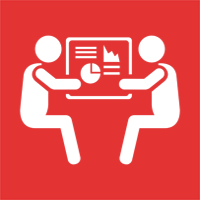8 Changes to Digital Marketing in 2016

No, 2016 won't be the year of mobile. Again. Nor will it be the year of digital or social. Why? Because by now, mobile, digital and social are likely well-established tools in your marketing tool belt.
Instead, the changes in the year ahead won't be broad sweeping and revolutionary, but more nuanced to help marketers find measurable value out of the latest trends of the last year or two.
With so many digital marketing options now available, it can be a bit overwhelming to know what you should be doing first, which considerations are most important and where the "gotchas" are along the way. Big data and Internet of Things (IoT) you say? Well that sounds great! But wait, how do I gather it, get insights from it or act upon it? Much less, show a return on invesetment (ROI).
In working with digital marketers from global enterprise companies in various industries, we continue to see a number of uber themes swirl around the marketer's playground: personalization, customer journey and data. Within each of those themes, you may start to think about how you use digital analytics, optimization, marketing automation or social.
Granted, all areas are important and have much potential for great marketing success, but sometimes you need to focus on what will have the biggest impact on your decisions in the next year. Here are a few changes marketers will likely see in 2016:
1. Line Will Blur Between Digital Analytics And Optimization
Digital or Web analytics has been around for decades, but site testing or optimization is a little newer. And until recently, the two disciplines have been managed and thought of rather distinctly - both in terms of people resources and technology. However, these two worlds are coming closer and closer together. For analytics, you can derive interesting trends and insights, but if you don't act on it (optimization), then you're not seeing the full impact. From the optimization side, there is no testing or comparison if you don't have analytics behind it.
If these roles continue to be kept separate, each party should be integrated into the other's strategy and strong communication is needed.
2. Responsive Design Informs and Fuels App Development and Optimization
For the past three or four years, responsive design has served several important functions. First, it allowed organizations to quickly deploy mobile-friendly sites with reasonable investments and maintenance costs. Second, it allowed organizations who could not afford to maintain site and app development to streamline their development and fund a reasonable mobile strategy. Third, it allowed every organization to collect analytics data from which they could learn what their mobile users really want to do within the mobile channel.
It is that third point that has been driving recent conversations with our clients who plan to do mobile app testing. By understanding the behaviors and goals of their customers who have engaged with responsive sites, our clients have been able to learn what kinds of experiences their customers need and these desired experiences become the blueprint for a new set of mobile apps. Now, rather than using optimization to determine whether you have built a relevant experience, our clients can now take advantage of optimization to refine the experiences that customers have already shown to be relevant.
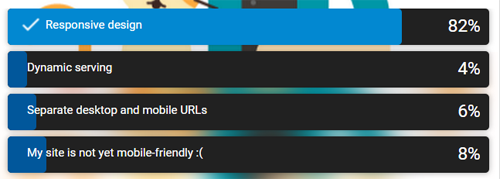
(Google recently asked its Google+ followers which configuration they were using for their mobile site and responsive design won by a large majority).
3. Personalization Becomes The Goal of Testing and Targeting
Let me be the first to say that I hate the term "personalization." It confuses everyone within earshot because each person can have a slightly different definition. However, since you are likely reading this to yourself, think about your own definition of personalization. Now, how do you plan to achieve it? Optimization is generally thought of as the use of testing, segmentation and targeting to deliver relevant experiences to customers. More and more, however, these relevant experiences are expressed through some form of personalization. In other words, the goal of optimization will be to deliver customers experiences that are both relevant and personal.

4. Optimization Will Become Ubiquitous as it Becomes More Automated
Does that seem scary? Automated testing and targeting? It shouldn't. Most retail and travel sites have a limited form of automated optimization throughout their sites in the form of recommendations engines that serve up content and combinations of content based on algorithms without any human intervention. If you use some form of media mix modeling to automate your ad spend, you are likewise already using a form of automated optimization. So, the idea that testing and targeting to personalize content and experiences throughout your site is not really that far removed.
The key to making this palatable is trust in the system through transparency. Our clients already export our optimization data to other systems for their own independent analysis and scrutiny by their own analysts and data scientists. Thus, optimization vendors will need to make their platforms more open and their reporting should be geared as much to encourage inspection as to presenting results.
5. Customer Service Will Finally Optimize Experiences Just as Marketing Does
For too long, marketers have been alone in their ability to optimize customer experiences. This is not without reason. Marketers serve content ungated content to anyone who wants to see it, while much of the customer service experience can take place behind a login, through a chat client, or even through a transfer to another channel such as email or phone. But, clients have been more active in their search for ways to test behind the login and track resolution across channels.
While the justification for this will continue to be the traditional reasons (cost reduction and client satisfaction), there will also be a knowledge that a better experience leads to higher retention rates and more new business through word-of-mouth marketing performed by satisfied customer on the clients behalf.
6. Search Will Move Toward Targeting by Buyer Personas
With the recent launch of Google Customer Match and the advancements in remarketing, search will rely more on segmenting audiences this year so that certain buyer persona types see the right message at the right time. Marketers will be able to nurture their customers through search using tailored messaging for that particular type of customer.
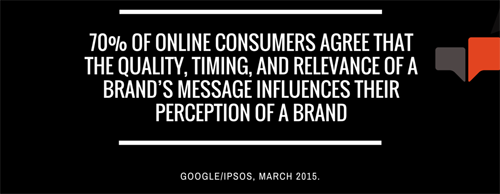
For example, if you have a list of customers who've purchased gardening products from you in the past (online or in store) and you've identified them as your "Georgina Gardener" persona type, you could upload their email addresses through Customer Match and target them with a tailored ad message that includes your current promo of gardening tools. This might remind you of how you've set up your marketing automation campaigns. We expect to see more similarities between these two marketing tactics in 2016.
7. The Idea of Big Data Will Come to a Head
While it's received a lot of attention, many marketers are still asking "what exactly is Big Data?" At the highest level, it's a broad term for data sets so large or complex that traditional data processing applications are inadequate. It often refers to the use of predictive analytics or other advanced methods to extract value from data, but seldom to a particular size of data set. In addition, the scale of the data is such that it's physically not able to be contained on one system only to be partitioned across many systems working in parallel to compute results.
And if you know how to use Big Data accurately and effectively, it can lead to more confident decision making, and better decisions can result in greater operational efficiency, cost reduction and reduced risk. It's this last part that will be the focus for marketers this year. The efficiency comes from the distributing of the data across commodity hardware vs. having to buy very expensive high performance storage devices to hold all your data. We're past the honeymoon period, so executives will expect to see tangible ROI from all the Big Data spend and projects. This means from the beginning of your Big Data initiatives, you must make sure you have a strategy, clear KPIs and a reliable way to measure your success.
8. Privacy Issues will be a BIG Deal
Last year saw an increase in the number and size of breaches (think Sony or Ashley Madison), which means users have even more cause for concern for their online security. As a result, in 2016 businesses will be hypervigilant about how they think of and address security and privacy. We're starting to see this addressed with social media platforms like Facebook and Snapchat, as well as states such as California which is taking the lead with new breach reporting and other privacy-impacting laws. It's unlikely, however, that we'll see significant new federal action on this front given it's an election year.
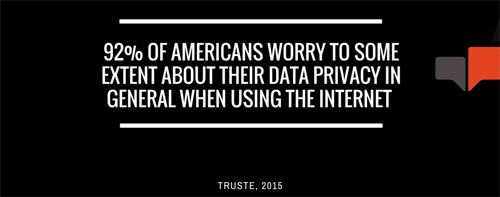
Related is the new General Data Protection Regulation (unifying data protection within the European Union with a single law), which may not hit businesses until 2017 or 2018, but some of the required changes are significant and businesses will likely have to start adapting prior to full implementation in order to be compliant. In addition, the status of Safe Harbor 2.0 remains cloudy and Standard Contractual Clauses have serious unsustainable negative impacts on businesses. If you're collecting data on your customers, these issues will matter to you. What to do? Study up on latest privacy laws and ensure your security and privacy policies are up to snuff.
You may have noticed I didn't delve down into hot topics like virtual reality, machine learning and IoT, which are all exciting and loaded with potential to change our marketing landscape. While I highly recommend getting knowledgeable and up-to-speed with these technologies - because they will be part of your life soon - your biggest priority this year should be nailing the "new basics" in our digital marketing world. Good luck out there!



